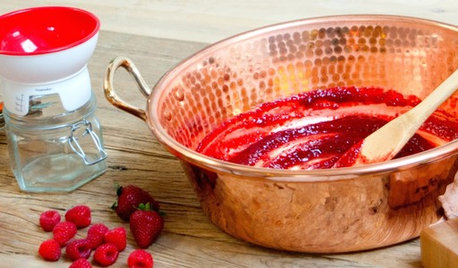Saving tomato seed
conace55
15 years ago
Related Stories

EDIBLE GARDENSSummer Crops: How to Grow Tomatoes
Plant tomato seedlings in spring for one of the best tastes of summer, fresh from your backyard
Full Story
SHOP HOUZZHouzz Products: Save a Taste of Summer
Can't bear to part with the flavors of summer peaches, berries and tomatoes? Then jam on it!
Full Story
GARDENING GUIDESHow to Plant a New Lawn From Seed
Choose from more grass varieties and save money over sod by starting your lawn from seed
Full Story
CONTAINER GARDENS8 Easy Container Plants to Grow From Seed
Get beautiful blooms and herbs in summer by starting these choice garden picks from seed in spring
Full Story
GARDENING GUIDESSeeds or Seedlings? How to Get Your Garden Started
Growing delicious herbs and vegetables starts with knowing your goals and when you want to plant
Full Story
MOST POPULARSummer Crops: How to Grow Sunflowers
Savor snack-tastic sunflower seeds once the radiant blooms have faded — if the birds have saved you any, that is
Full Story
LANDSCAPE DESIGNGet Along With Less Lawn — Ideas to Save Water and Effort
Ditch the mower and lower your water bill while creating a feast for the eyes with diverse plantings and gathering places
Full Story
SAVING WATER6 Reasons Why You Should Save Your Rainwater Now
Collect and store during the rainy season so you’ll have water ready for irrigation when you need it
Full Story
LIFEThe Top 5 Ways to Save Water at Home
Get on the fast track to preserving a valuable resource and saving money too with these smart, effective strategies
Full StoryMore Discussions








jaliranchr
Skybird - z5, Denver, Colorado
Related Professionals
Baltimore Landscape Architects & Landscape Designers · Palm Springs Landscape Architects & Landscape Designers · Hartford Landscape Contractors · Arlington Landscape Contractors · Wakefield Landscape Contractors · Kailua Landscape Contractors · New Cassel Landscape Contractors · Olympia Landscape Contractors · Ponte Vedra Beach Landscape Contractors · Woodburn Landscape Contractors · Irvington Landscape Contractors · Bel Air Solar Energy Systems · Cocoa Beach Solar Energy Systems · Sanger Solar Energy Systems · Tustin Solar Energy Systemsdavid52 Zone 6
austinnhanasmom
conace55Original Author
margaretmontana